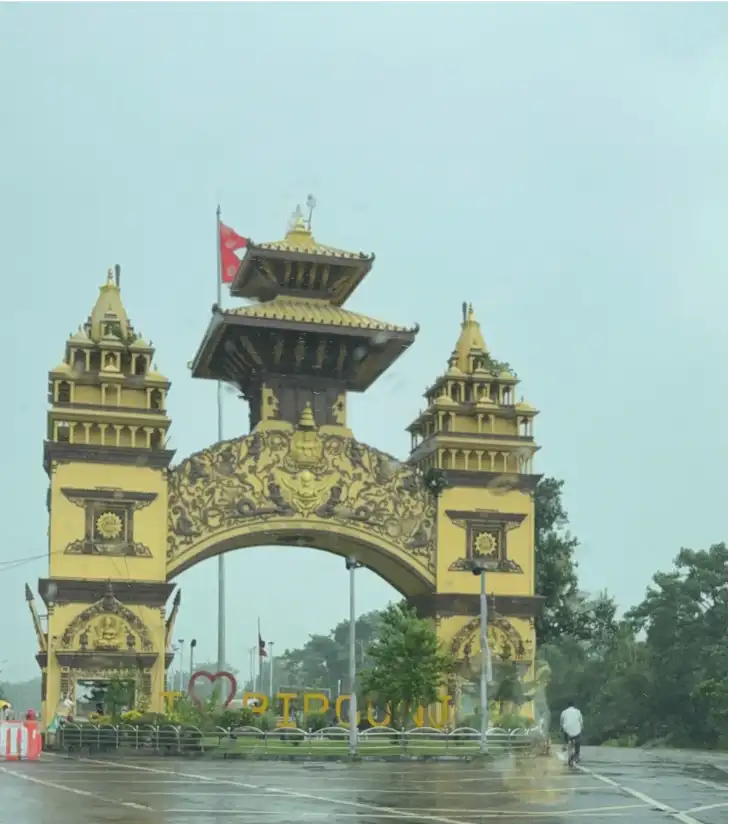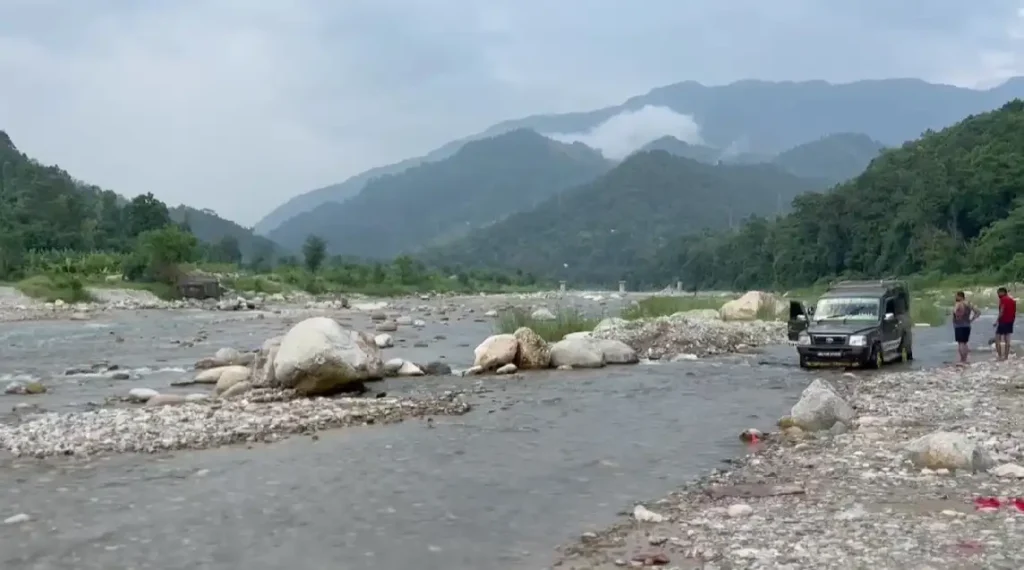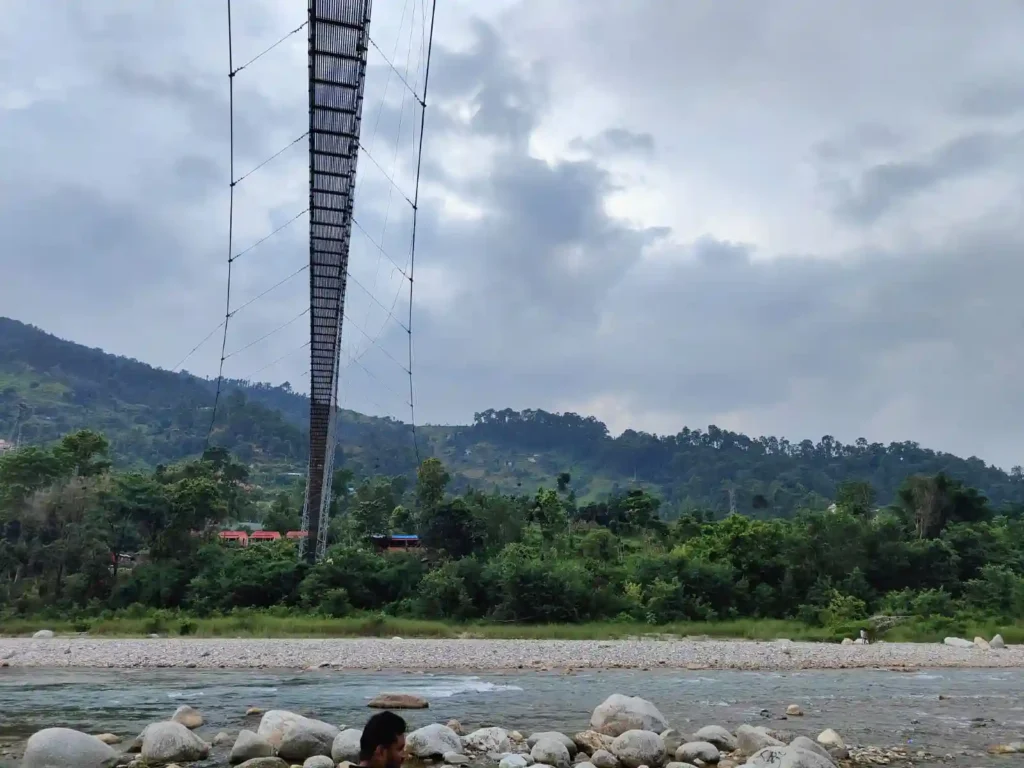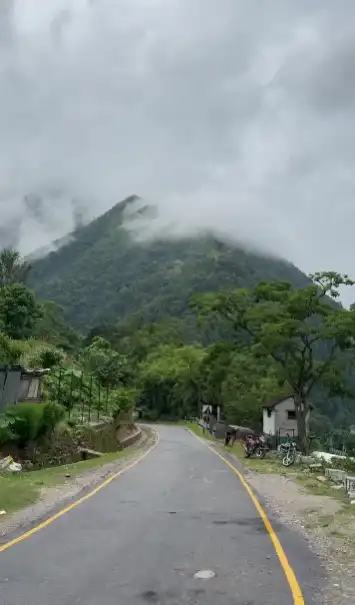Birganj to Kathmandu Road Trip: Permit, Routes & Tips for Surviving Nepal’s Toughest Roads
Step 1: Getting Your Car Permit (Bansar)
Planning to drive from India to Kathmandu? Your first stop is the Bansar office to get a car permit. I entered Nepal through Virat Nagar with a seven-day Bansar, but since it was about to expire, I renewed it at Birganj Bansar office.
💡 Pro tip: You can only extend your Bansar one day before it expires — not earlier. I avoided the long five-to-six-hour wait in Kathmandu by getting a fresh permit at Birganj. It cost me 1200 NPR + 720 INR — totally worth it for a stress-free journey.

The Scenic Escape from Birganj
Once the paperwork was done, we hit the road around noon — and what a start! The drive out of Birganj is surprisingly smooth, lined with thick forests on both sides. This stretch passes through Barsa Wildlife Reserve, home to tigers and other wild animals.

Even in the daytime, it feels magical — a straight road cutting through lush greenery, fresh mountain air filling the car, and the occasional chance to spot wildlife. If you have time, check out the jeep safari or elephant safari nearby — perfect for nature lovers.
Read Also: You Won’t Believe How Kulman Ghishing Turned Nepal’s Lights Back On!
Picking the Best Route to Kathmandu
There are three major routes from Birganj to Kathmandu:
- Hetauda – Narayan Ghat Route (300 km): The safest, but the longest. Most public buses use this one.

- Mountain Route (142 km): The shortest but roughest — full of sharp turns, steep climbs, and off-road patches.
- Kulekhani Alternate Route: Scenic and adventurous, but better suited for SUVs and high-clearance vehicles.

We chose the mountain route to save time — and wow, it felt like a real adventure! The last 60–70 km are not for the faint-hearted. Expect roller-coaster-like climbs and descents. If you’re driving a low-clearance car, the Narayan Ghat route is a safer bet.
The Toughest Stretch – Water Crossings & Rocky Roads
Things get serious near Kulekhani and Bheem Phedi. The roads here narrow down to single-lane passes. In some places, you even have to drive through riverbeds because parts of the road have washed out.

Here’s what I learned the hard way:
- Let your brakes cool every 10 km — overheating can be dangerous.
- Take your time on descents — there’s no prize for reaching Kathmandu faster.
- SUVs and off-road vehicles handle this route best. Sedans? They’ll scrape.
It’s exhausting but also thrilling — the kind of drive that makes you feel like a true explorer.
Read Also: Super Mario Galaxy Movie Cast Revealed – Fans Are Losing It!
Roadside Noodles & The Last Leg to Kathmandu
Somewhere halfway, we stopped at a small roadside eatery and ordered Veg Wai Wai (Nepal’s favorite instant noodles). Simple, hot, and comforting — exactly what you need after bouncing around on rocky roads.
As we climbed higher, the air turned crisp and cool. I went from sweating in a T-shirt to pulling on a sweatshirt. The mountain views along this stretch are spectacular — valleys on one side, pine-covered hills on the other.
After roughly 4.5 to 5 hours, we finally hit the main road leading into Kathmandu. That feeling of relief? Absolutely priceless.
Got it! Here’s a well-structured FAQ section for your Birganj–Kathmandu road trip blog. Adding this improves SEO and helps answer common reader questions:
Frequently Asked Questions (FAQ)
1. Do I need a permit to drive from Birganj to Kathmandu?
Yes. You need a Bansar (car permit) to drive in Nepal. You can get it at the Birganj Bansar office or at the border when you enter Nepal.
2. How long does it take to drive from Birganj to Kathmandu?
It usually takes 4.5 to 6 hours, depending on the route you choose and road conditions. The mountain route is shorter but bumpier, while the Hetauda–Narayanghat route is longer but safer.
3. Which route is best for a car with low ground clearance?
If you’re driving a sedan or hatchback, take the Hetauda–Narayanghat route. The mountain route can be very rough and has river crossings that can damage low vehicles.
4. Are Nepal’s mountain roads safe for tourists?
Yes — but drive carefully. Roads can be narrow with steep drops, so use low gear on descents, let brakes cool, and avoid driving late at night if possible.
5. Where can I stop for food on the way to Kathmandu?
There are several roadside eateries serving Veg Wai Wai, Dal Bhat, and tea. Try stopping at a local restaurant halfway to enjoy authentic Nepalese food.
